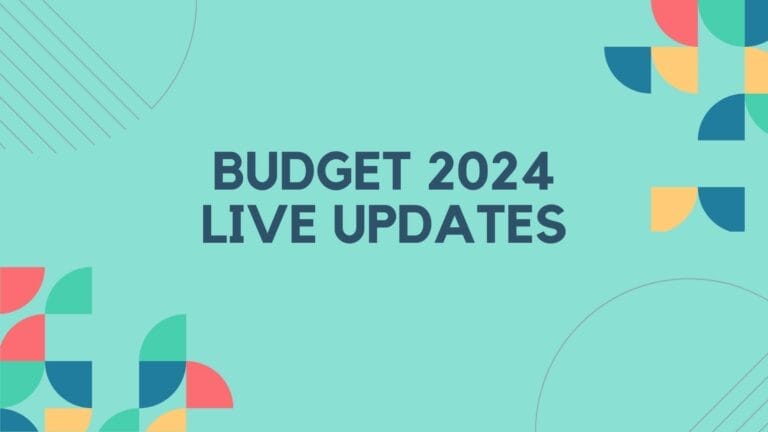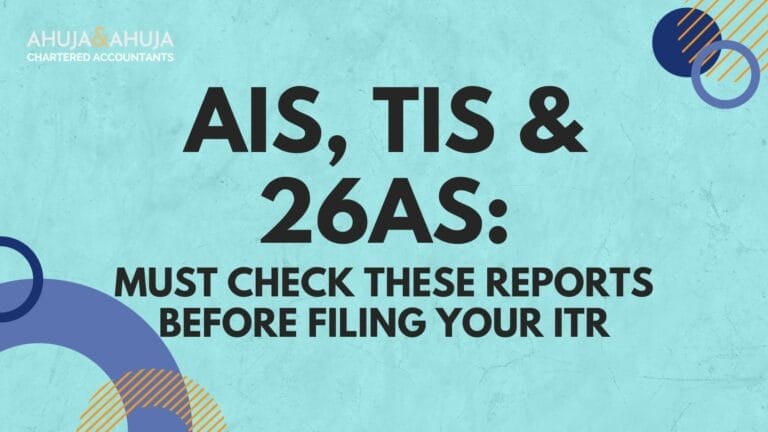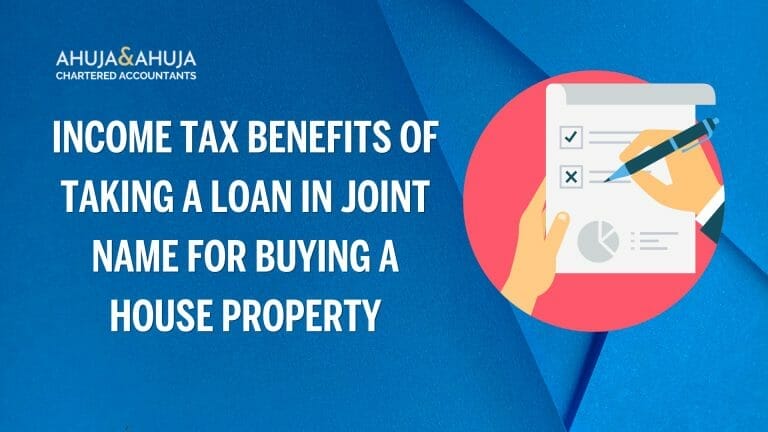Decoding Section 148A: Strategic Responses and Procedural Insights for Notice u/s 148A(b)
Understanding the principles of taxation law can often be convoluted and challenging. Especially in India, with its plethora of regulations and continuous amendments, navigating these complexities can be like traversing a labyrinth. Our mission at Ahuja & Ahuja is to simplify the layered intricacies of tax laws, such as the Income Tax Act, 1961. As part of this ongoing effort, we bring you a detailed, simplified, and comprehensive analysis of an essential amendment – Section 148A.
An important addition to the Income Tax Act, 1961, Section 148A reflects a renewed stress on procedural fairness while aiding the Assessing Officer (AO) to identify the potential cases of income escaping assessment. This amendment is a step forward in underpinning a transparent and accountable tax administration framework.
To better grasp its significance, it is vital to familiarize yourself with the nuances of the Income Tax Return Filing process in India. Returning to Section 148A, we will dive into the crux of its guidelines, where we explore its implications, benefits for taxpayers, and changes from the traditional practices.
Understanding Section 148A
Section 148A sets out new procedural guidelines that AOs must follow before issuing a notice under Section 148, especially concerning income that has escaped assessment. Essentially, these guidelines require preliminary inquiry and the opportunity for the taxpayer, or assessee, to be heard.
In the earlier procedure the AO was required to form his/her opinion about income escaping assessment on its own without consultation with the assessee. This led to situations where the opinion itself was challenged which led to delay in reassessment proceeding as well as quashing of the proceedings itself leading to loss of revenue to the government. To avoid those disputes, streamline the reassessment procedure, increase transparency and give right to the assessee to be heard, the government has introduce new section 148A.
Section 148A thrusts structure into the re-assessment process and introduces a more systematic and transparent approach to handling taxpayers’ cases. However, what do these terms mean, and how do these changes influence taxpayers? To make the ensuing parts more comprehensible, let’s delve in to clarify these complex procedures and the changes they bring about.
Please, note these regulations are applicable unless specific conditions relating to Search & Seizure (Section 132) or an exchange of information under section 135A are satisfied.
The New Procedure Before Reopening: A Step-by-Step Guide
The Income Tax Act has been updated to include a provision that aims at bringing about more transparency and accountability in the way income escaping assessment is identified. Section 148A outlines a clear path which the Assessing Officer (AO) must tread before he can reopen a case. The following are the steps as per Clause (b):
- Conducting an Inquiry: Before issuing a notice, the AO is empowered to conduct an inquiry if there’s information suggesting that taxable income has been underreported or not reported at all. Conducting an inquiry is not blanket but must come with a prior nod from a specified authority. This means due diligence is observed before the process commences, lending credence to the inquiry’s validity.
- Opportunity to be Heard: In case of potential income escape, the assessee is served a notice, which is the crux of Section 148A(b). The assessee is provided between 7 to 30 days to explain why proceedings should not be initiated against them. This period could be extended upon request, offering taxpayers a fair chance to present their case. Any material and report of enquiry conducted which is the basis of the notice has to be shared by the AO with the assessee.
- Reply Consideration: Post receiving the reply from the assessee, if any, the AO is tasked with considering this response thoroughly before moving forward. This implies that the assessee’s response carries significant weight in the decision-making process.
- Decisive Action: With the prior approval of the appropriate authority, the AO must decide within a stipulated time whether to proceed with issuing a notice under Section 148. This decision is made based on the material presented, including the assessee’s reply, ensuring no haste in judgment.
How It Differs from the Earlier Procedure:
Previously, the issuance of a notice under Section 148 could be done without a prescribed preliminary inquiry or providing an opportunity for the assessee to present their case. The discretion lay heavily with the AO, making it a less consultative process. Here’s a simplified comparison:
| Aspect | Earlier Procedure | New Procedure Under Section 148A |
|---|---|---|
| Preliminary Inquiry | Not explicitly required | Allowed, with approval of specified authority |
| Opportunity for Assessee | Not mandated | Mandatory, with a specified timeframe for response |
| Assessing Officer’s Report | Not necessary before notice issue | Decision only post-enquiry and assessee’s response |
| Specified Authority | Notice to be issued only with the Approval | Involvement in approval process at multiple stages |
By embedding these additional layers into the process, Section 148A transforms how reassessments can be handled, thereby strengthening taxpayers’ positions.
Rights and Duties of the Assessee:
Under the new provision, the assessee has the following rights and obligations:
- Right to Receive Notice: It’s the assessee’s right to be informed via notice about the AO’s intention to reassess their income.
- Duty to Respond: It is the duty of the assessee to provide a duly filled and reasoned response within the timeline prescribed in the notice.
- Right to Seek Extension: The assessee may request an extension for submitting the response, which is at the discretion of the AO to grant.
- Right to Be Heard: Each assessee has the inherent right to be heard, which is central to arriving at a fair conclusion for both parties.
- Duty to Furnish Information: If required, the assessee is obliged to furnish relevant information, documents, or evidence deemed necessary to support their case.
Before proceeding to the next section about directing an appropriate response to a notice under Section 148A(b), it is important to understand that each step in this process is critical. Taxpayers must address the notice conscientiously, ensuring that they respect their obligations while exercising their rights to avoid any unwarranted repercussions.
Responding to a Notice under Section 148A(b): A Strategic Approach
Being served with a notice under Section 148A(b) can be an unsettling experience for any taxpayer. However, with the right approach, this situation can be managed systematically. Here’s a guide to efficiently addressing such a notice:
Step 1: Comprehend the Notice
- Read Carefully: Don’t skim the notice. Understand the grounds on which the income is considered to have escaped assessment.
- Identify the Issues: Pinpoint the specifics that the AO has highlighted and the tax year in question.
Step 2: Gather Information
- Compile Evidence: Collect relevant documentation, including tax returns, supporting financial statements, and any other evidence that substantiates your filings.
- Structure Your Response: Organize the evidence logically to address each concern the AO raised efficiently.
Step 3: Legal Understanding
- Know Your Rights: Familiarize yourself with your rights under the new provision, including the right to be heard and the right to seek an extension.
- Seek Expert Guidance: Consult with tax professionals who can offer invaluable advice and representation if needed.
Step 4: Draft Your Reply
- Address Queries Comprehensively: Your response should be detailed and answer all the points raised in the notice.
- Be Timely: Respond within the stipulated time frame; delays can be interpreted negatively.
Step 5: Submission
- Formal Procedure: Submit your response through the official Income Tax e-filing portal or any other method prescribed in the notice.
- Record Keeping: Retain a copy of the notice, your response, and all the proofs submitted for your records.
Step 6: Follow-Up
- Maintain Communication: Keep track of the developments in your case. If required, engage in further correspondence with the tax department.
- Be Prepared for All Outcomes: Depending on the AO’s assessment, be ready to accept the decision or appeal against it. Knowing the ins and outs of income-tax litigation could be critical at this juncture.
Quick Reference: A Checklist for Responding to Section 148A(b) Notices
To aid in organizing your response, here’s a checklist to follow:
- [ ] Thoroughly read and understand the notice.
- [ ] Mark the deadline date for response submission prominently.
- [ ] Assemble all relevant financial records and documents.
- [ ] Consult with tax advisors or legal professionals.
- [ ] Draft a precise and comprehensive reply to the notice.
- [ ] Cross-check the submitted information for accuracy.
- [ ] Keep a complete set of copies for all correspondences with the tax authority.
Remember that receiving a notice under Section 148A(b) is not necessarily indicative of any wrongdoing. It’s an opportunity provided by the tax authorities to clarify and substantiate your tax filings. A measured, informed, and timely response is the best strategy.
If you require assistance with tax filings or seek to better understand and make use of a Tax Residency Certificate in context to international taxation, do not hesitate to reach out to specialists.
Frequently Asked Questions (FAQs) on Section 148A(b) and Conclusion
Navigating through the minutiae of the Income Tax Act can summon a barrage of questions. This section aims to demystify some of the most common queries associated with the notice under Section 148A(b).
FAQs
Q: What is the time frame within which I have to respond to a notice under Section 148A(b)?
A: You are given not less than seven days and not exceeding thirty days from the date of the notice. However, this can be extended upon a valid application.
Q: What happens if I fail to respond within the specified time?
A: Non-response within the allocated time can result in the AO proceeding with the issuance of notice under Section 148, implying an income escape assessment.
Q: Can I seek professional help to respond to the notice?
A: Absolutely! It is encouraged to consult tax advisors or seek income tax return filing services for advice and drafting a detailed response.
Q: In what way can I submit my response to the notice?
A: The response should be submitted through the official Income Tax e-filing portal or in accordance with the instructions specified in the notice.
Q: How can I ensure that my response is adequate and that I’ve addressed all the concerns raised by the AO?
A: Ensure that your response is clear, detailed, and addresses all queries raised in the notice. It is recommended to cross-verify with a tax professional.
Summary of Section 148A
The introduction of Section 148A(b) reflects the shifting landscape of tax administration in India, tending towards transparency and fairness. The procedural guidelines set forth here aid both taxpayers and AOs to engage in a more structured and equitable process, allowing issues to be aired and addressed amicably.
As you immerse yourself in satisfying the obligations set forth under Section 148A(b), remember that adhering to timelines, maintaining detailed records, and engaging in open communication can significantly smoothen the process. If there are lingering doubts or if you find yourself at a crossroads, seeking specialized advice might not just be beneficial; it could be pivotal.
At Ahuja & Ahuja, we advocate for heightened awareness and responsible tax planning. Should you find yourself grappling with a notice under Section 148A(b), or in any tax-related conundrum, our team of experts is equipped to assist you through various services such as faceless assessment, tax litigation, and filings to ensure compliance and peace of mind.
This article aimed to illuminate the path through the labyrinth of tax procedures, particularly regarding Section 148A(b). Should you wish to explore more, whether about taxation, financial planning, or the nuances of navigating the Indian tax system, you’re always welcome to reach out to us for guidance.
With our comprehensive look at Section 148A(b) now concluded, I hope this article serves as both an informative and practical guide to help you confidently manage any related notices. If any part of this article or process about the notice under Section 148A(b) is unclear or requires further elaboration, do not hesitate to get in touch with a professional advisor.
Disclaimer
The materials provided herein are solely for educational and informational purposes. No attorney/professional-client relationship is created when you access or use the site or the materials. The information presented on this site does not constitute legal or professional advice and should not be relied upon for such purposes or used as a substitute for professional or legal advice.





